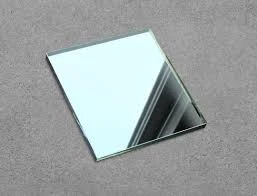

The Rising Demand for Tempered Glass in Modern Architecture
In recent years, the architectural landscape has undergone significant transformation, with tempered glass emerging as a preferred material in construction and design. This glass, known for its strength and safety, has revolutionized how structures are built, allowing for innovative designs and increased functionality. The demand for tempered glass has surged, driven by both aesthetic appeal and practical advantages.
The Rising Demand for Tempered Glass in Modern Architecture
One of the key advantages of tempered glass is its safety features. Unlike traditional glass, which can shatter into hazardous shards, tempered glass breaks into small, blunt pieces, reducing the risk of injury. This characteristic has made tempered glass a popular choice for public spaces, such as shopping malls, airports, and schools, where safety is a top priority. Additionally, its resistance to heat makes it suitable for use in fire-rated applications, providing an extra layer of security in building design.

Aesthetically, tempered glass allows for stunning design possibilities. Architects can create seamless transitions between indoor and outdoor spaces, maximizing natural light and enhancing the overall ambiance of a building. Glass walls, skylights, and glass railings not only contribute to a modern, sleek appearance but also improve energy efficiency by reducing the need for artificial lighting during the day.
Moreover, the customization of tempered glass has added to its appeal. With a variety of finishes, tints, and coatings available, designers can match the specific needs of any project. Whether it is reflective glass that minimizes glare or frosted glass for privacy, the versatility of tempered glass opens up endless possibilities for creativity in architecture.
The growing interest in sustainable building practices further fuels the demand for tempered glass. As more architects and builders prioritize eco-friendly materials, the energy-efficient properties of tempered glass make it an ideal choice. By enhancing natural lighting and reducing heating and cooling costs, tempered glass contributes to green building certifications and helps meet environmental standards.
In conclusion, the order of tempered glass in modern construction reflects its multifaceted benefits. Its strength, safety, aesthetics, and energy efficiency make it indispensable in contemporary architecture. As the industry continues to evolve, the reliance on tempered glass will likely increase, paving the way for innovative designs that prioritize both function and form. Whether for skyscrapers or residential properties, tempered glass stands as a testament to the blend of technology and art in building design.